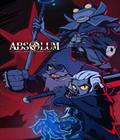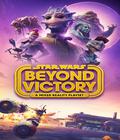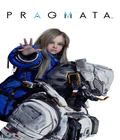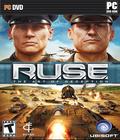It's probably fitting that I went into a game based on deception with absolutely no idea what to expect. It's probably fitting that I'm having a surprisingly difficult time describing it.
This is not necessarily a good thing.
Ill-thought out statements like "It's the fastest slow-paced RTS ever!" or "It's sort of like real-time Advance Wars!" are more likely to obfuscate than illuminate. Even starting with the very basics doesn't improve things much because writing "It's a World War II RTS" will make half of your readers act like narcoleptics.
But what the hell: It's a World War II RTS.
Now wake up.
R.U.S.E. is good, different and worthy of your attention.
Oddly, the primary thing I've taken away from R.U.S.E. isn't so much in the titular ruses or the RTS mechanics themselves, but the way it makes you feel like a general. Maps are broad and sweeping, usually containing four of five cities on their own, and while the closest zoom setting shows your tanks trundling across vast fields, the highest zoom setting renders the world as a battle map in a smoky war room, with units replaced by stacks of counters slowly making their way around the board. It's a minor touch, to be sure, but it's a lovely transition that really hammers home the feeling that you are a general, sweeping your armies across the terrain from a command bunker. Every map in this would be five in Company of Heroes.
The mechanics add to this feeling, too. It's been a while since I've played an RTS that felt this focused on the big picture, rather than asking you to pick the important targets for every individual unit and manually trigger their special abilities at the key moments. You can't simply tank rush, either, mind you; a good idea of timing, positioning, deception, and recon are essential.
Deception ties into the titular ruses themselves, which we'll get to in a minute, but recon and positioning have a very linked role. R.U.S.E. has a novel use for the fog of war, which is to say that it doesn't exist in the usual sense. From the very beginning, you can see the entire map, and pretty much everything is visible. You can see your opponents' bases as they build up, you can see the supply depots they capture, and you can see the units they build. However, until one of your units can actually spot them, you can only see if it's a light unit, a heavy unit, or an air unit. As such, you can anticipate attacks as soon as your opponent starts them; when stacks of light unit counters start rumbling out of a base, something's going to kick off, but until they get into visual range, it's impossible to tell whether you'll be facing a swarm of infantry or mixed groups of recon trucks, antitank guns, and shock troopers.
It makes sense. In hindsight, it's hard to imagine a military general without an idea of what he'd be facing, despite perhaps not knowing all the details. However, R.U.S.E. lets you screw with this in many, many ways. Camouflage is the main one. Smaller units can hide in woods and towns, and with the damage boost afforded by a surprise attack, even the most powerful units can be wrecked without an opportunity to fight back if such danger zones aren't first scouted out.
Then there are the ruses themselves. You're granted ruses as time passes, and they take the form of cards that can be played on any single sector of the map. These range from simple physical boosts — Blitz speeds up all of your units in that sector, Terror makes enemy units rout faster — to ruses that play with what you and your opponent can see. You can use Decryption or Spy to see enemy orders in any given sector or to show what those counters represent. You can build decoy bases and armies to toy with their expectations, or you can use Reverted Intel to show your light units as heavy units and vice versa. With the game's focus on hard counters against everything that's not an overwhelming force (antitank guns will kill tanks, tanks will kill exposed infantry, anti-air guns will kill planes), being unexpected is crucial.
It probably sounds complicated — and certainly, the sheer number of possibilities are overwhelming if you dive straight into a skirmish game, as you can build pretty much any structure and any unit from the get-go — but after a little experience, it really doesn't feel it. The UI is minimalist; there are no health bars, and even if you don't know your Panzer IIIs from your Matilda IIs, the game sums units up rather nicely as "medium tanks" or "fighter-bombers." Selecting a unit and mousing it over an enemy gives you an idea of your chances of success in that particular fight. It's all very user-friendly, although this belies a terrifying mechanical heart: The game's advice, if you want more details, is to select a unit and hit the Tab key. This presents you with a comprehensive information screen that details the effectiveness against different types of units with different types of armor, and very little in the way of explanation. What could be a helpful tool is instead rendered meaningless to most, which is a crying shame, but thanks to the other UI tweaks, it's only essential for the most hardcore.
Solid mechanics are pretty meaningless without solid modes to use them in, however. R.U.S.E. has a mixed bag of a campaign: It's a serviceable tutorial for the game mechanics, but it's extremely slow to start and eventually devolves into too many defense missions. With that said, it contains an excellent mid-section that largely takes place on sprawling maps, with multiple AI generals battling it out alongside you. While these skirmishes have little effect on your progress, it certainly gives the impression that you're an important part of an ongoing battle. It's a shame that it's all bookended with a deeply silly story and populated with characters firmly entrenched in the uncanny valley, although the voice acting is at least spot-on.
The campaign really isn't enough of a reason to pick up this game, but solo players also have traditional skirmish options to get to grips with, in addition to a few rather difficult "what if" scenarios, like Operation Sea Lion and an alternate history in which Mussolini never rose to power. Skirmish in particular is worth a mention, with a wide spread of AI profiles serving up solid opposition, depending on what sort of personality you feel like taking on. If you want a 2v2 match in which you and a computer focused on artillery take on two computers focused on rushing, you can set that up here.
Tricking a computer isn't nearly as much fun as tricking a human, though, and multiplayer really is where it's at. A few of the aforementioned scenarios are cooperative, and there's the usual (and serviceable) multiplayer matchmaking, but R.U.S.E. is at its best when you're taking on a friend. This is one of the few RTS games where most victories give you a genuine sense of outsmarting your opponent, after all. Oddly, though, the game doesn't really cater to annihilation game types. Destroying your opponent's base is one way to win, but matches are generally timed and based on score, with points awarded for destroying units and buildings. It's an interesting way of doing things, with an unusual emphasis on keeping your own units alive.
We're left with a slightly underwhelming single-player campaign, well-crafted skirmish options, a deeply enjoyable multiplayer, and I've got a lingering sense that I don't know what the hell R.U.S.E. is. Is it a clever RTS disguised as a war game? A simple-looking game that's actually really complicated? A simple RTS that looks like a clever RTS disguised as a simple RTS? I don't know, and perhaps that's fitting for a game based on deception. What I do know is that it's fun, and while the multiplayer is unlikely to pull a huge crowd away from StarCraft II, it's absolutely worth a look for any RTS fan who has a friend to play with.
Score: 8.6/10
More articles about R.U.S.E.











 R.U.S.E. is a strategy game in which the players use their brain as the ultimate weapon, fighting a war of perception, where the ability to deceive and mislead the enemy determines success. A first in a strategy game, R.U.S.E. reinvigorates the genre by using deception to give new-found depth to the game play.
R.U.S.E. is a strategy game in which the players use their brain as the ultimate weapon, fighting a war of perception, where the ability to deceive and mislead the enemy determines success. A first in a strategy game, R.U.S.E. reinvigorates the genre by using deception to give new-found depth to the game play.





































